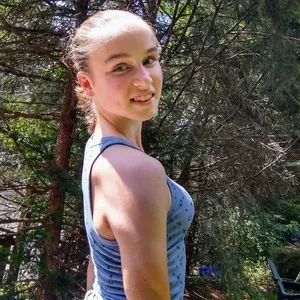We need to talk about PRIME. No, not Prime Day, PRIME Energy Drink. The colorfully packaged, fruity-flavored beverages, created by controversial YouTubers Logan Paul and KSI, have become a kind of status symbol among kids and young teens. The brand sells three products, two of which are caffeine-free and geared toward post-workout recovery. Think Gatorade, but make it TikTok famous. The third product PRIME sells is an energy drink, which contains an eye-popping 200 milligrams of caffeine per 12-ounce can. That’s twice the daily recommended limit for kids ages 12-18, which also seems to be the exact age range of many PRIME consumers.
So, how much caffeine is that?
Shockingly, a standard 5-Hour Energy shot contains exactly 200 milligrams of caffeine, too. Unfortunately, I’ve had my fair share of energy drinks over the years. So I can tell you firsthand that’s a lot of caffeine.
For context, a 16-ounce can of Monster Energy usually contains around 160 milligrams and a 12-ounce can of Red Bull clocks in at slightly more than 100 milligrams. Additionally, a standard 12-ounce can of Coca-Cola contains 34 milligrams of caffeine, meaning PRIME is equivalent to about six cans of soda. This is the reason why PRIME may be in hot water.
Here’s what government officials said
On July 9th, Senate Majority Leader Chuck Schumer held a press conference where he dubbed the drinks a “cauldron of caffeine,” which could pose “serious health concerns” for kids. “PRIME is engaged in a vast advertising campaign aimed at kids,” Schumer added.
PRIME cans are printed with a teensy, tiny warning stating that the drink is “not recommended for children under 18” or “people sensitive to caffeine.” Despite this, it’s easy to see how the beverage appeals to kids. The brightly-colored, block-printed cans grab attention with their fun, fruity flavors such as Ice Pop, Tropical Punch, and Strawberry Watermelon. Additionally, PRIME drinks are promoted by YouTubers Logan Paul and KSI, whose audience seems to be comprised largely of adolescent boys.
PRIME drinks have already been banned in many schools, and not just because of their caffeine content. The cans and bottles have become a kind of status symbol among kids, which can result in distraction and even conflict in the classroom. It’s similar to why many schools had to ban Silly Bandz back in 2010. Ahh, simpler times.
But it might not just be schools banning PRIME. At Sunday’s press conference, Senator Schumer called for the FDA to investigate PRIME energy drinks. Regardless of the outcome, hopefully, all this attention will raise awareness of the issues surrounding PRIME. Since Schumer’s announcement, there’s been a rise in TikTok videos explaining the deceptive nature of PRIME.
And if there’s one thing we know kids don’t like, it’s being tricked by adults.


